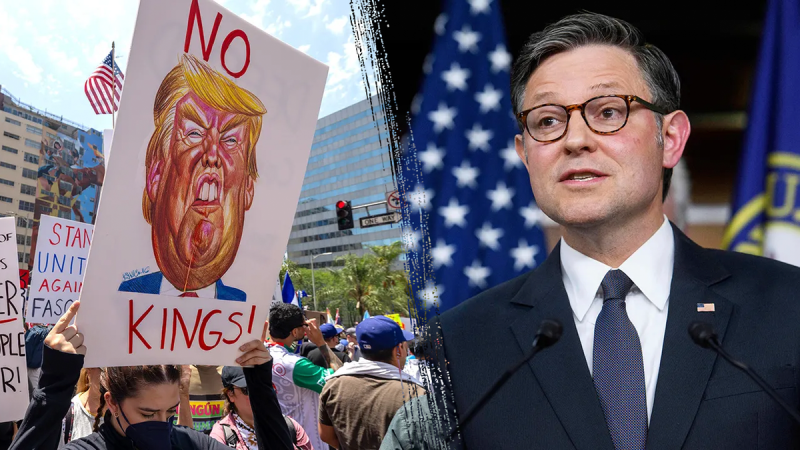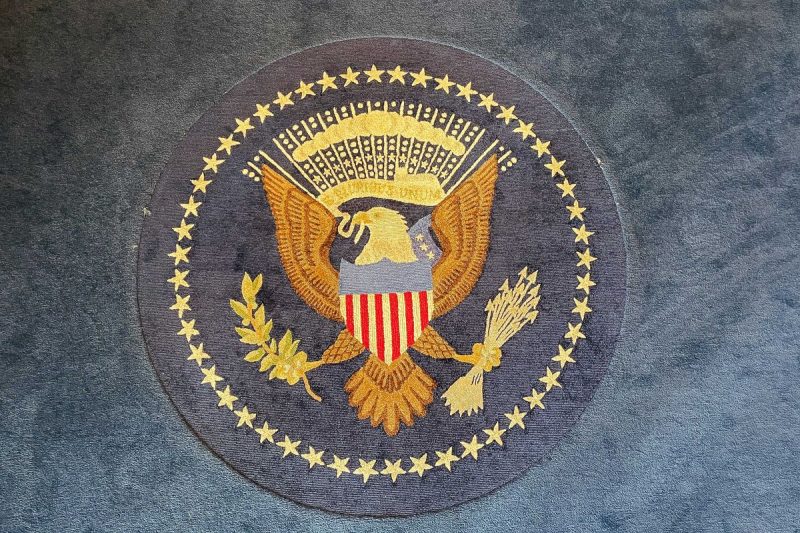Republican lawmakers have spent the week sharpening their attacks on Saturday’s nationwide day of protests against President Donald Trump, which many GOP leaders dismissed as ‘Hate America’ rallies.
Cities across the country are expected to see hundreds of thousands of people come out for the ‘No Kings’ movement, and several congressional Democrats have even said they will attend.
Republicans have seized on the protests as a product of far-left activism, while at the same time arguing Democrats have held firm against the GOP’s plan to end the government shutdown in a bid to please that far-left base.
House Speaker Mike Johnson, R-La., told Fox Business Network he hoped that Democratic leaders who attended would be more willing to accept the GOP’s plan after the demonstrations were over — but he did not sound overly optimistic.
‘It’ll be a collection of wild leftist policy priorities, and that’ll be on display for the whole country. After that’s over, I hope there’s a few Democrats over here who will come to their senses and return to governing the country,’ Johnson said.
‘Right now, I don’t think— it’s my assumption and all of ours that they would not make that concession before that rally’s over because they don’t want to face the angry mob. I mean it’s sad, but that’s where we are.’
House Minority Leader Hakeem Jeffries, D-N.Y., dodged a question on whether he would attend one of the rallies on Friday, telling reporters, ‘I haven’t finalized my schedule for the weekend given, you know, the sensitivities around the government shutdown. I’m still very hopeful that Republicans will decide to show up for work so we can get the government back open.’
‘But I support the right of every single American to participate in the rallies that are going to take place this week and showing up to express dissent against an out-of-control administration,’ he said.
However, Senate Minority Leader Chuck Schumer, D-N.Y., said he would attend one of the protests, as did House Democratic Caucus Chairman Pete Aguilar, D-Calif.
Rep. Zach Nunn, R-Iowa, predicted more top Democratic figures would go but, like Johnson, signaled hope that they would acquiesce to Republicans’ demands when it was over.
‘My guess is if they don’t want a primary from the left, they’ll probably find a way to sneak it into their schedule. The real question that’s going to be is, do they have the fortitude after Saturday to come back and open up the government?’ Nunn told Fox News Digital earlier this week.
‘They should be doing it today. But if they feel like they’ve got to appease their base, then they better come to Jesus on Sunday and figure out a way to help them get back to the business of taking care of the American people.’
House GOP leaders also criticized the rallies at nearly every one of their daily shutdown press conferences this week.
Majority Leader Steve Scalise, R-La., said Friday that Schumer was ‘more concerned’ with ‘impressing the ‘Hate America’ rally crowd that’s coming up here tomorrow than he is about not solving all of our problems tomorrow.’
And House Majority Whip Tom Emmer, R-Minn., told Fox News’ Maria Bartiromo on Tuesday of the rallies’ place in the shutdown fight, ‘The rumor is that they can’t end the shutdown beforehand, because a small but very violent and vocal group is the only one that’s happy about this.’
‘If they shut it down beforehand, then they’ve got to deal with that group beforehand. If they make it through that, then at least they’ve made it through their Hate America rally, and then they can get this thing done,’ Emmer said.
The House passed a bill to keep the federal government funded at current levels through Nov. 21, called a continuing resolution (CR), mostly along party lines last month.
It’s since failed 10 times in the Senate, with a majority of Democrats rejecting any spending deal that does not also include an extension of COVID-19 pandemic-era Obamacare subsidies that will expire at the end of this year without congressional action.










